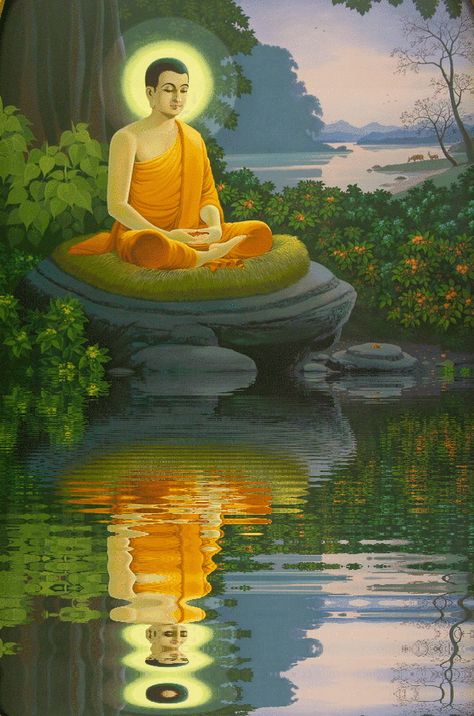“Not Sure!” – The Standard of the Noble Ones
A Dhammatalk by Ajahn Chah
There was once a Western monk, a student of mine. Whenever he saw Thai monks and novices disrobing he would say, ”Oh, what a shame! Why do they do that? Why do so many of the Thai monks and novices disrobe?” He was shocked. He would get saddened at the disrobing of the Thai monks and novices, because he had only just come into contact with Buddhism. He was inspired, he was resolute. Going forth as a monk was the only thing to do, he thought he’d never disrobe. Whoever disrobed was a fool. He’d see the Thais taking on the robes at the beginning of the Rains Retreat as monks and novices and then disrobing at the end of it… ”Oh, how sad! I feel so sorry for those Thai monks and novices. How could they do such a thing?”
Well, as time went by some of the Western monks began to disrobe, so he came to see it as something not so important after all. At first, when he had just begun to practice, he was excited about it. He thought that it was a really important thing, to become a monk. He thought it would be easy.
When people are inspired it all seems to be so right and good. There’s nothing there to gauge their feelings by, so they go ahead and decide for themselves. But they don’t really know what practice is. Those who do know will have a thoroughly firm foundation within their hearts – but even so they don’t need to advertise it.
As for myself, when I was first ordained I didn’t actually do much practice, but I had a lot of faith. I don’t know why, maybe it was there from birth. The monks and novices who went forth together with me, come the end of the Rains, all disrobed. I thought to myself, ”Eh? What is it with these people?” However, I didn’t dare say anything to them because I wasn’t yet sure of my own feelings, I was too stirred up. But within me I felt that they were all foolish. ”It’s difficult to go forth, easy to disrobe. These guys don’t have much merit, they think that the way of the world is more useful than the way of Dhamma.” I thought like this but I didn’t say anything, I just watched my own mind.
I’d see the monks who’d gone forth with me disrobing one after the other. Sometimes they’d dress up and come back to the monastery to show off. I’d see them and think they were crazy, but they thought they looked snappy. When you disrobe you have to do this and that… I’d think to myself that that way of thinking was wrong. I wouldn’t say it, though, because I myself was still an uncertain quantity. I still wasn’t sure how long my faith would last.
When my friends had all disrobed I dropped all concern, there was nobody left to concern myself with. I picked up the pātimokkha2 and got stuck into learning that. There was nobody left to distract me and waste my time, so I put my heart into the practice. Still I didn’t say anything because I felt that to practice all one’s life, maybe seventy, eighty or even ninety years, and to keep up a persistent effort, without slackening up or losing one’s resolve, seemed like an extremely difficult thing to do.
Those who went forth would go forth, those who disrobed would disrobe. I’d just watch it all. I didn’t concern myself whether they stayed or went. I’d watch my friends leave, but the feeling I had within me was that these people didn’t see clearly. That Western monk probably thought like that. He’d see people become monks for only one Rains Retreat, and get upset.
Later on he reached a stage we call… bored; bored with the Holy Life. He let go of the practice and eventually disrobed.
”Why are you disrobing? Before, when you saw the Thai monks disrobing you’d say, ‘Oh, what a shame! How sad, how pitiful.’ Now, when you yourself want to disrobe, why don’t you feel sorry now?”
He didn’t answer. He just grinned sheepishly. Continue reading















